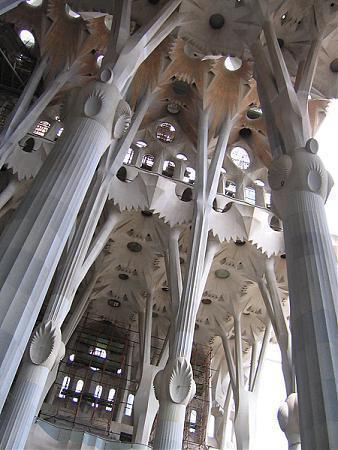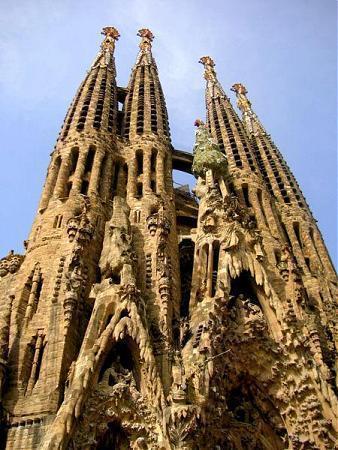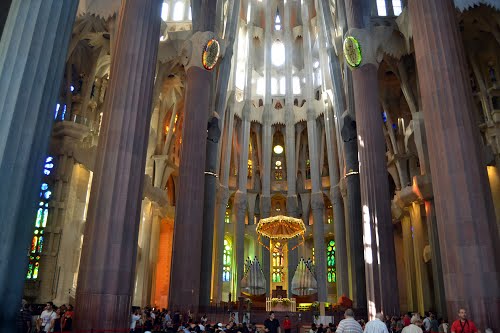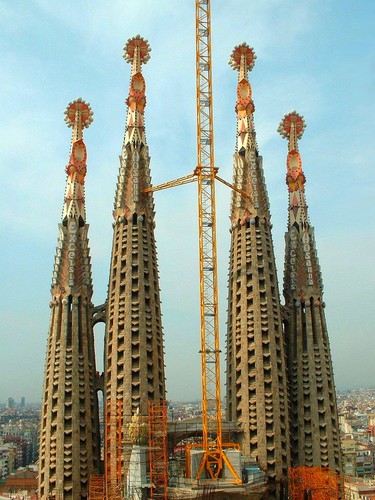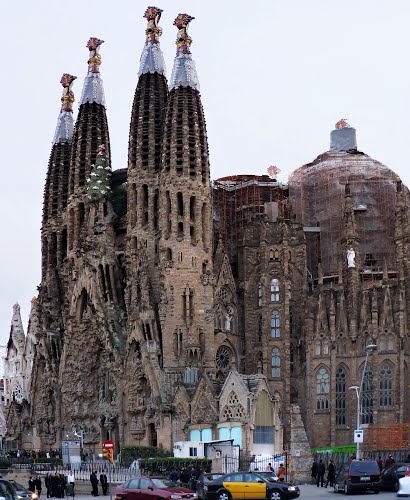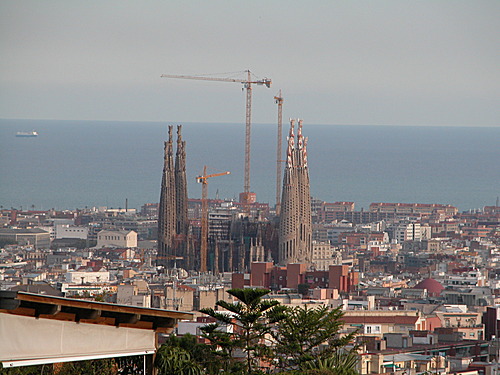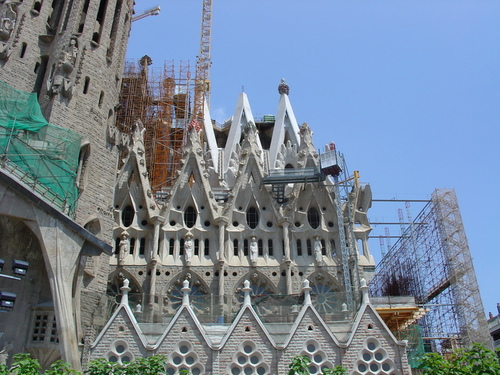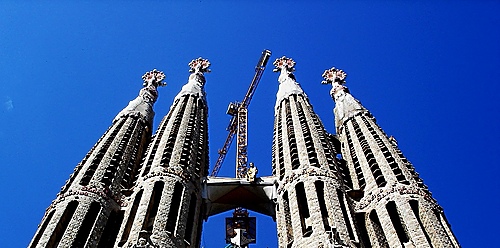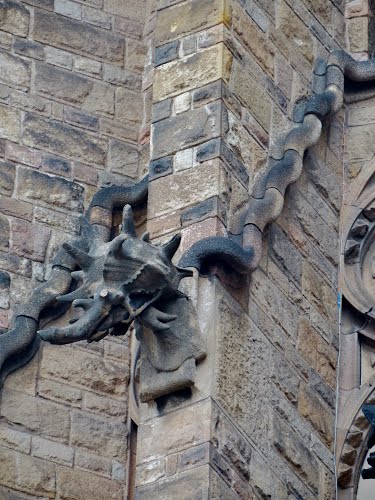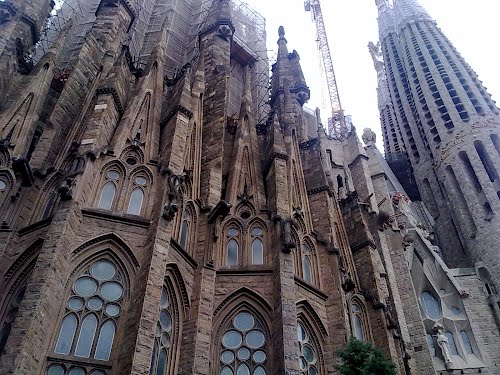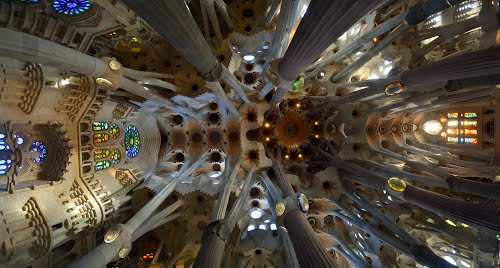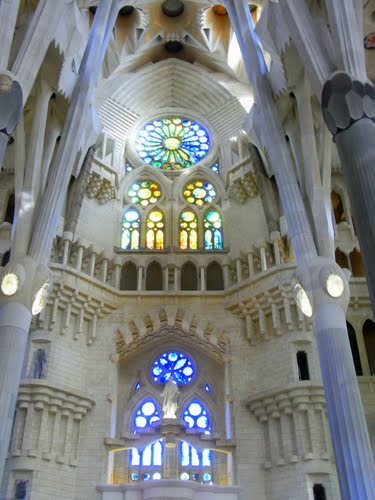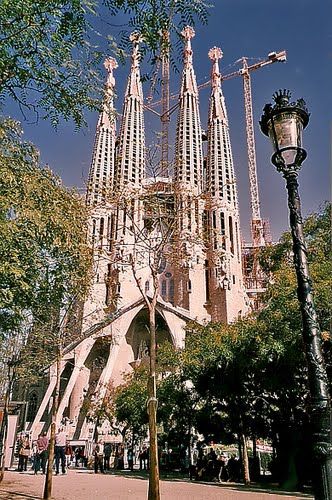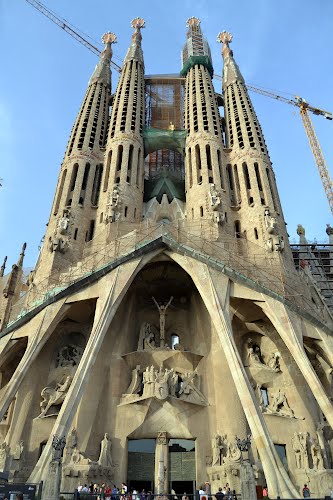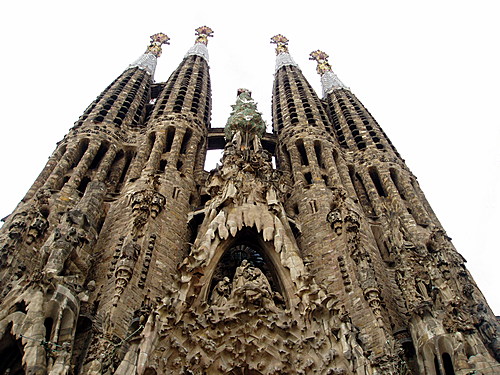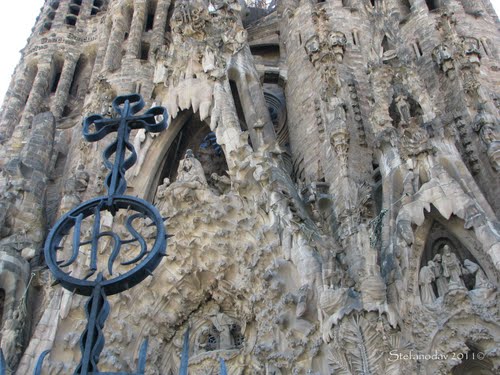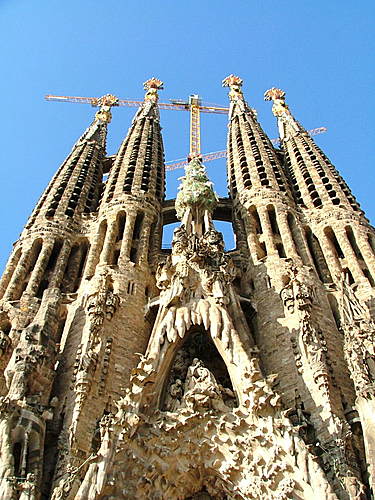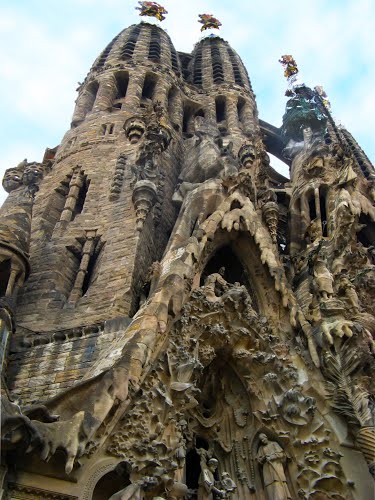The Sagrada Familia is a large Roman Catholic church in Barcelona, designed by Spanish architect Antoni Gaudi (1852–1926). Although incomplete, the church is a UNESCO World Heritage Site, and in November 2010 Pope Benedict XVI consecrated and proclaimed it a minor basilica, as distinct from a cathedral, which must be the seat of a bishop.
Construction of Sagrada Familia commenced in 1882 and Gaudi became involved in 1883, taking over the project and transforming it with his architectural and engineering style, combining Gothic and curvilinear Art Nouveau forms. Gaudi devoted his last years to the project, and at the time of his death at age 73 in 1926, less than a quarter of the project was complete.
Sagrada Familia's construction progressed slowly, as it relied on private donations and was interrupted by the Spanish Civil War, only to resume intermittent progress in the 1950s. Construction passed the midpoint in 2010 with some of the project's greatest challenges remaining and an anticipated completion date of 2026, the centenary of Gaudi's death.
The basilica has a long history of dividing the citizens of Barcelona: over the initial possibility it might compete with Barcelona's cathedral, over Gaudi's design itself, over the possibility that work after Gaudi's death disregarded his design, and the 2007 proposal to build an underground tunnel of Spain's high-speed rail link to France which could disturb its stability.
History
Background
The Basilica of the Sagrada Familia was the inspiration of a bookseller, Josep Maria Bocabella, founder of Asociacion Espiritual de Devotos de San Jose.
After a visit to the Vatican in 1872, Bocabella returned from Italy with the intention of building a church inspired by that at Loreto. The apse crypt of the church, funded by donations, was begun 19 March 1882, on the festival of St Joseph, to the design of the architect Francisco de Paula del Villar, whose plan was for a Gothic revival church of a standard form. The apse crypt was completed before Villar's resignation on 18 March 1883, when Gaudi assumed responsibility for its design, which he changed radically. Antoni Gaudi began work on the church in 1883 but was not appointed Architect Director until 1884.
Construction
On the subject of the extremely long construction period, Gaudi is said to have remarked: "My client is not in a hurry." When Gaudi died in 1926, the basilica was between 15 and 25 percent complete. After Gaudi's death, work continued under the direction of Domenec Sugranes i Gras until interrupted by the Spanish Civil War in 1936.
Parts of the unfinished basilica and Gaudi's models and workshop were destroyed during the war by Catalan anarchists. The present design is based on reconstructed versions of the plans that were burned in a fire as well as on modern adaptations. Since 1940 the architects Francesc Quintana, Isidre Puig Boada, Lluis Bonet i Gari and Francesc Cardoner have carried on the work. The illumination was designed by Carles Buigas.
The central nave vaulting was completed in 2000 and the main tasks since then have been the construction of the transept vaults and apse. As of 2006, work concentrated on the crossing and supporting structure for the main tower of Jesus Christ as well as the southern enclosure of the central nave, which will become the Glory facade.
The church shares its site with the Sagrada Familia Schools building, a school originally designed by Gaudi in 1909 for the children of the construction workers. Relocated in 2002 from the eastern corner of the site to the southern corner, the building now houses an exhibition.
Construction status
Chief architect Jordi Fauli announced in October 2015 that construction is 70 percent complete and has entered its final phase of raising six immense towers. The towers and most of the church's structure are to be completed by 2026, the centennial of Gaudí's death; decorative elements should be complete by 2030 or 2032.
Computer-aided design technology has been used to accelerate construction of the building. Current technology allows stone to be shaped off-site by a CNC milling machine, whereas in the 20th century the stone was carved by hand.
In 2008, some renowned Catalan architects advocated halting construction, to respect Gaudi's original designs, which although they were not exhaustive and were partially destroyed, have been partially reconstructed in recent years.
AVE tunnel
Since 2013, AVE high-speed trains have passed near the Sagrada Familia through an underground tunnel that runs beneath the centre of Barcelona.
The tunnel's construction, which began on 26 March 2010, was controversial. The Ministry of Public Works of Spain claimed the project posed no risk to the church. Sagrada Familia engineers and architects disagreed, saying there was no guarantee that the tunnel would not affect the stability of the building. The Board of the Sagrada Famíiia and the neighborhood association AVE pel Litoral had led a campaign against this route for the AVE, without success.
In October 2010, the tunnel boring machine reached the church underground under the location of the building's principal facade. Service through the tunnel was inaugurated on 8 January 2013. Track in the tunnel makes use of a system by Edilon Sedra in which the rails are embedded in an elastic material to dampen vibrations. No damage to the Sagrada Familia has been reported to date.
Consecration
The main nave was covered and an organ installed in mid-2010, allowing the still-unfinished building to be used for religious services. The church was consecrated by Pope Benedict XVI on 7 November 2010 in front of a congregation of 6,500 people. A further 50,000 people followed the consecration Mass from outside the basilica, where more than 100 bishops and 300 priests were on hand to offer Holy Communion. There are currently no regularly scheduled Masses celebrated at the basilica, although visitors may pray at the Chapel of the Holy Sacrament and Penitance. Occasionally, Mass is celebrated, although attendance requires an invitation. When Masses are scheduled, instructions to obtain an invitation are posted on the basilica's website.
Fire
On 19 April 2011, an arsonist started a small fire in the sacristy which forced the evacuation of tourists and construction workers, the sacristy was damaged, and the fire took 45 minutes to contain.

